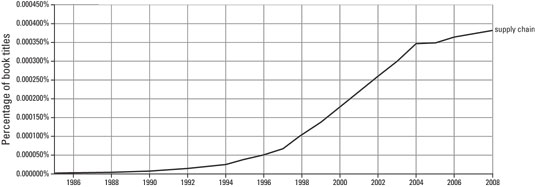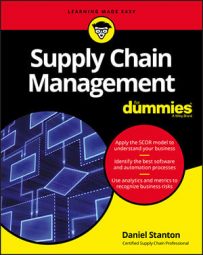 Frequency that "supply chain" has appeared in book titles.
Frequency that "supply chain" has appeared in book titles.Supply chain management is the planning and coordination of all of the people, processes, and technology involved in creating value for a company. Managing a supply chain effectively involves coordinating all of the work inside of your company with the things that are happening outside of your company. In other words, it means looking at your business as a single link in a long, end-to-end chain that supplies something of value to a customer.
The word "value" shows up a lot when people talk about supply chain management. Basically, value means "money." If a customer is willing to pay for something then it has value.
Negotiating prices, scheduling manufacturing, and managing logistics all impact the value equation for a company, and they are critical to a supply chain, but because they are so interdependent, it's a bad idea to manage them separately, in silos. As companies grow larger, supply chains get longer, and the pace of business gets faster, which means it becomes more important to keep the various functions in a supply chain aligned. Ironically, many of the strategies and metrics that businesses relied on in the past, and that managers have been taught to use, can actually drive the wrong behaviors. For example, a sales rep might hit her quota by landing a huge deal with a customer, but the deal might be unprofitable for the company because of the costs it will drive for the logistics and manufacturing functions. So sales, logistics, manufacturing, procurement, and all of your other functions need to be aligned to ensure that the business is pursuing profitable deals.The difference between the amount of money your company brings in (revenue) and the amount of money that you spend (costs) is your profit. In other words, your profit is simply the amount of value that you have captured from your supply chain.
On the other hand, companies that do a good job of managing their supply chain are better able to take advantage of value-creation opportunities that their competitors might miss. For example, by implementing lean manufacturing, companies can reduce inventories. By being responsive to customer needs, they can build stronger relationships with their customers and grow their sales. By collaborating closely with their suppliers, they can get access to the materials they need, when they need them, at a reasonable cost.In most companies today, more than 70 percent of the costs and 100 percent of the revenues are dependent on how the supply chain is managed. So keeping all of the parts of the supply chain aligned is key to running any business successfully. That is why supply chain management has become so important, so quickly.

